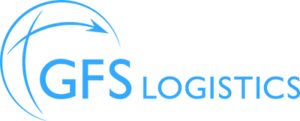Designing an efficient distribution network is crucial for companies to deliver products and services to customers promptly and cost-effectively. The distribution network connects a company’s production facilities, warehouses, and transportation routes to meet customer demand.
When designing a distribution network, five critical success factors must be considered. Let’s get into how your brand can work with a third-party logistics management team like GFS Logistics in Lancaster, Texas to streamline your distribution network design.
1. Understanding Customer Requirements
The first key factor to improving your distribution network is understanding customer requirements and expectations deeply.
What are the delivery timeframes customers expect? What stock levels are expected at customer locations? What delivery frequencies do they require?
Understanding unique customer needs enables you to tailor your distribution network specifically to meet those demands. Setting KPIs around customer service factors like on-time delivery, fill rates, and inventory accuracy is important.
Working with a logistics company like GFS Logistics can give you deep insight into customer needs for annual and seasonal fulfillment. Our team can help you conduct thorough customer research and analysis that can help you plan out a customer-centric distribution network. Contact us now by calling (972) 490-9090 to speak with a logistics manager.
2. Location Optimization
Optimizing the locations of production facilities, warehouses, cross-docks, and stocking points is imperative.
Facility locations should be chosen strategically based on proximity to suppliers, transportation routes, and key customer markets. The goal is to minimize overall transportation costs and delivery times while still providing the desired coverage of customer locations.
Some key factors to consider around facility location include real estate costs, labor availability, transportation connectivity, capacity for future growth, and compliance with local regulations.
As an example, so many national companies choose us to be their fulfillment partner because of our optimal warehouse location near Dallas, Texas. We are located near two major airports, and highways that lead directly into the nation’s heart or are a quick drive away from the nearest shipping port.
Taking the time to localize your shipping fulfillment needs can help you save money on long-term shipping and give you an edge over your competitors in the industry.
3. Inventory Management
Determining appropriate inventory levels and product assortments to stock at fulfillment locations is vital.
You want to minimize overall inventory carrying costs while still meeting target fill rates and avoiding out-of-stock items.
Utilizing demand forecasting and warehouse management system (WMS) optimization tools to determine ideal stocking quantities can help improve inventory turnover and reduce waste.
The optimal inventory mix may also vary by location based on local demand. Ongoing analysis and planning around inventory policies, service-level requirements, and product availability ultimately help optimize the flow of goods through the network.
4. Transportation Optimization
Designing an optimal transportation network to move products efficiently across the supply chain is key.
Decisions around transportation modes (road, rail, air, ocean), routes, capacities, and carrier selection all impact costs and service levels.
Networks should be designed to balance transportation costs with speed and reliability of deliveries. Other factors around fleet ownership vs third-party logistics, route planning, and shipment consolidation should also be evaluated.
Using transportation management systems, transloading practices, and shipment optimization analytics from a 3PL team can identify ways to improve routes, increase asset utilization, and reduce mileage.
5. Analyzing Deeper Data for Effective Network Design
When designing distribution networks, it’s crucial to dig into analytics beyond customer locations, transportation options, and product demand predictions. Working with a team like GFs Logistics can help you gain this insight as well as several other data types that will give you the full picture of your distribution needs and can help you plan your upcoming improvements accordingly.
Some of the essential analytics we can help you include in your distribution network design include customer order history, a review of past product performance, inventory turnover, warehouse capacity, throughput rates of distribution centers, market conditions, competitor success, and more!
Retool Your Distribution Network with GFS Logistics
The distribution network is a key competitive advantage in today’s customer-driven environment. Taking a strategic approach and optimizing these five critical success factors can help you build a responsive, efficient, and flexible distribution network.
The expertise of supply chain leaders like us is invaluable for assessing network design options and modeling the financial and service level impacts of proposed networks.
GFS Logistics helps proactively distribute your products with the customer’s experience in mind. Let us bring you closer to achieving maximum efficiency and effectiveness.
Contact us today to learn more about our services or call (972) 490-9090 to speak with a member of our logistics company.


